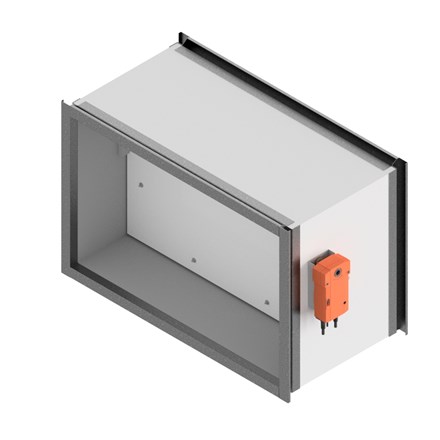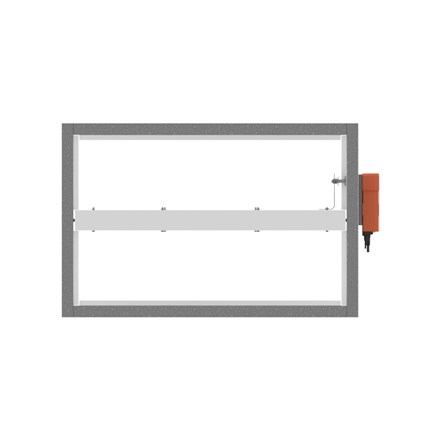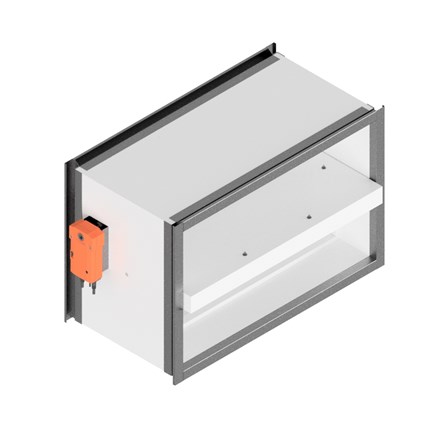







Key details
Fire resistance class: EI240(ve i↔o) S
Dampers certified for compliance with EN 15650
Intended for installation in general ventilation systems, in points of contact with vertical building partitions.
Additional details
Constancy of performance certificate 1391-CPR-2021/0123
Classified qualified under EN 13501-3 and tested under EN 1366-2
Declaration of performance no. 003-05-CPR-2021
Description
Cut-off mcr FID 240 dampers consist of a casing with a rectangular cross-section made of fire-resistant panels, a moving blade and an actuator activated either remotely or automatically thanks to a thermoelectric trigger. Total length of the casing can amount to 310-460 mm, depending on the height of the damper. The blade is made of 60mmthick fire-resistant panel. On the inner side, a sealing system can found. Additionally, stop profiles are fastened to limit the motions of the blade. Damper is typically equipped with steel flange, allowing for adding masking grilles or connecting steel ventilation ducts.
The mcr FID 240 dampers are equipped with an axial actuator with a BFL, BFN, BF-TL return spring, powered by 24 V AC/DC
or 230 V AC, with thermoelectric trigger set to 72 °C (optionally it is possible to use triggers with the nominal tripping
temperature of 95 °C). The actuators are equipped with limit switches used to monitor the blade position. Furthermore, the
mechanical position indicator is placed on the actuator.
The thermoelectric trigger is equipped with a test switch.
Dampers with analogue actuators: BFL, BFN or digital BF-TL close thanks to a thermoelectric trigger or power supply cut-off as
a result of activating the return spring. The dampers open when the power supply voltage is applied to the actuator terminals.
Furthermore, dampers with this kind of actuators can be also opened manually with a key. In case of fire, the damper blade
in the fire area opens while remaining closed in the rest of the building - everything happens remotely by supplying voltage.
This site uses the cookies to ensure better user experience and functionality. Using our site you agree to using cookies. Cookies can be allowed or blocked, or adjusted. Check it.
(+48) 58 341 42 45
ul. Grzegorza z Sanoka 2
80-408 Gdańsk





Mercor © 2024 All rights reserved.
Projekt i wykonanie:Wiselimber Interactive